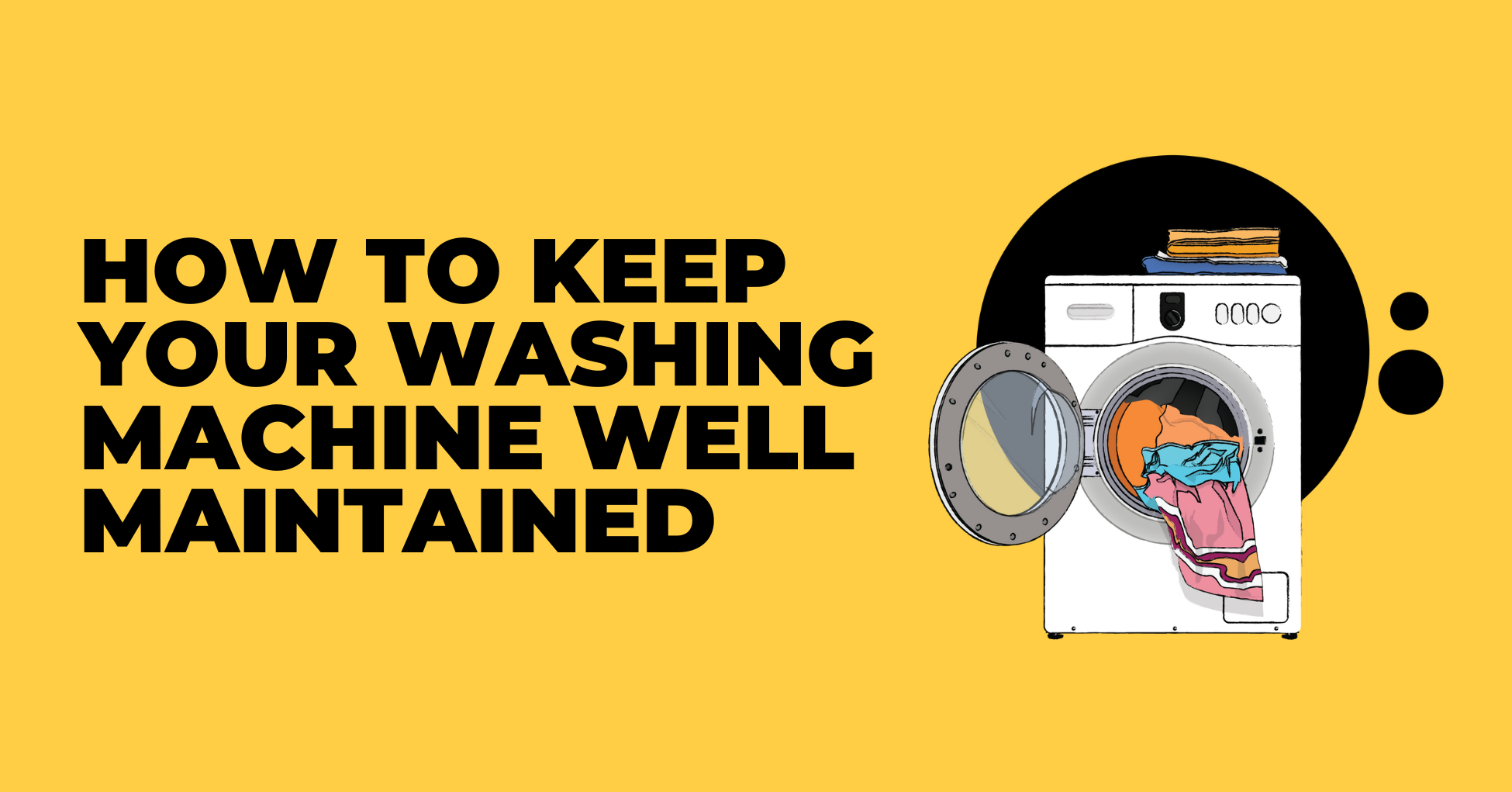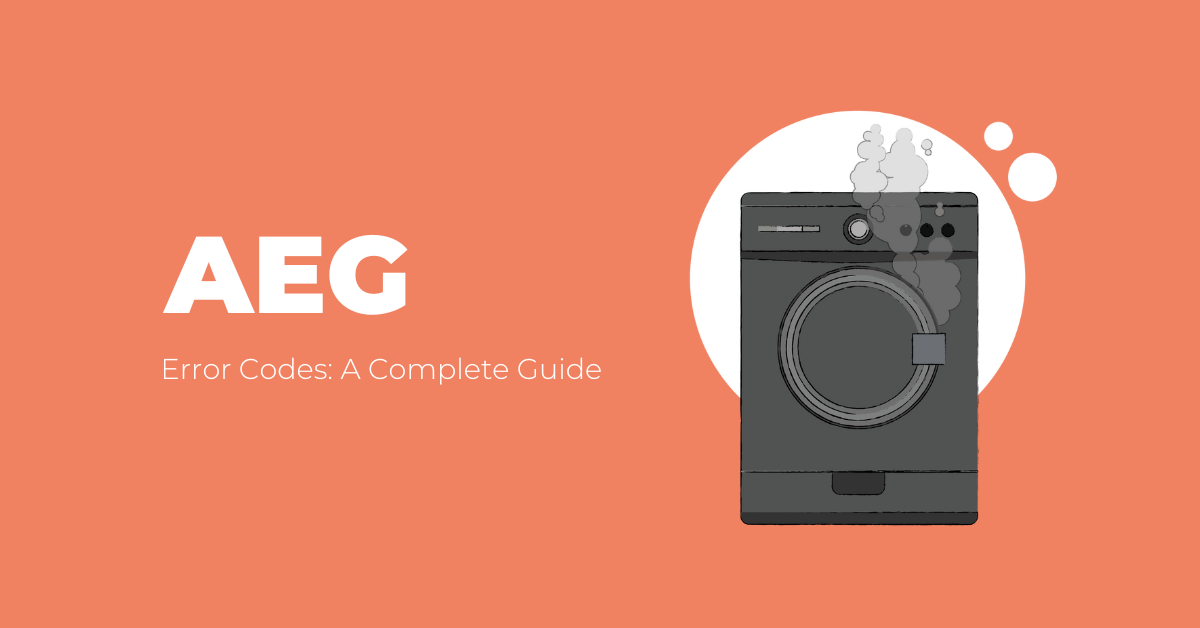
How to Keep Your Washing Machine Well Maintained
As one of the most valued appliances in the home, we rely on washing machines day-in and day-out to keep our clothes clean and fresh. Whilst appliances don’t last forever, some tend to break down more often than others and washing machines are the most common appliance in the home to malfunction. Giving your washing machine a little bit of TLC every now and again will go a long way to ensuring the least probability of a breakdown and we’ve provided some top tips for keeping your washing machine well maintained below:
Give the machine a regular maintenance wash
A maintenance wash is a deep-cleaning cycle for your washing machine where you would add a cleaning solution in, typically in the form of a liquid or powder. This additive helps to get rid of any mould or bacteria that may have built up inside of the washing machine, drum or waste pipe. Most manufacturers sell their own cleaning solutions, although you can also find cleaning solutions in your local supermarket or make your own at home if you’re feeling crafty.
We would recommend putting your washing machine on a maintenance wash once a month to keep your washing machine running smoothly and smelling great. To run a maintenance wash, follow these simple steps:
- Empty out anything from the washing machine drum
- Add the cleaning solution of your choice and make sure the correct amount has been added (refer to instructions on the product for reference)
- If there isn’t a maintenance wash option on the machine, put it on a cycle without pre-wash enabled. A ‘cotton’ wash is recommended if you don’t have a maintenance wash option
- Put your wash on the hottest setting available
- Start the wash cycle
- When the cycle has finished, open the door, pull back any rubber seals and wipe away any remaining dirt, debris or water (this is the most common cause of unpleasant smells!)
- Leave the door open until the washing machine has fully dried out
Clean the detergent drawer
Despite it being full of cleaning products each time you perform a wash, the detergent drawer can get dirty or clogged regularly if not maintained. To clean the drawer, simply pull it out of the machine and soak in a bowl of hot, soapy water and give it a good scrub. If you’re dealing with small parts, sometimes an old toothbrush is a great scrubbing tool to get the job done. If the drawer doesn’t come out of the machine easily, there will likely be a catch at the back of the drawer you may need to press down before the drawer can be released.
Most washing machines will also have a series of holes above the drawer itself that water is released from. This is often overlooked when cleaning the washing machine. Simply take a wash cloth or soft scouring pad and scrub any dirt or debris from this mechanism to keep the water flowing through freely and preventing any build up of detergent in the drawer.
Washing machine filter
Washing machine filters are designed to stop any debris, grit or small items from running out of the machine into the pipework of your house but they’ll need cleaning out evert 4-6 weeks to keep your machine running smoothly.
The filter can be accessed by removing the small protect at the bottom of the machine and it’s typically a circular ‘bung’ that needs to be twisted to remove. There’s a good chance that water will leak out when the filter is removed so be sure to put down a couple of towels before you remove the filter. Once the filter is out, remove any small items from the filter and clean it by running it under hot water before putting it back in the machine again.
Top tips for maintaining your washing machine
- Replace the water hoses
- Water hoses behind the washing machine can deteriorate over time. We would recommend that these are checked regularly for bulging, cracking or leaks. If a problem is found, simply replace the hose.
- Move the machine
- To prevent hoses from being damaged behind the machine, we would recommend that you leave around 4 inches (10cm) of clearance between the machine and the wall.
- Keep the machine level
- Keeping the machine level can prevent noise or damage to your flooring. Most washing machines will have feet that can be adjusted by twisting them.
- Air the machine out
- Once a wash cycle has finished, we would recommend keeping the washing machine door open to air the appliance out and help prevent the build up of mould and other bad smells.
- Measure your detergent
- Adding too much detergent can quickly clog up the washing machine drawer. Refer to your appliance instruction manual to determine how much detergent and softener is needed for each wash.
- Don’t overload the machine
- Whilst some machines will now weigh the load before the cycle begins, older washing machines will have a set amount of water released for each cycle and overloading the machine will be harder on the appliance and will also result in sub-par washes.
- Check your pockets
- Lastly, make sure old coins, hair clips or any other pocket-junk are removed from clothing before you put it in the washing machine. These can lead to breakdowns and also clog the filter much more frequently.
Check out our maintenance section for more useful articles on maintaining your home appliances.






